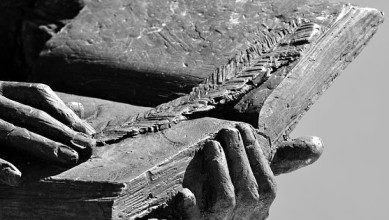How to Tame a Wild Tongue, a chapter in Gloria Anzaldua’s book Borderlands/La Frontera: The New Mestiza reflects on the in-betweenness that Chicanas like her experienced as an outcome of living on the Mexico-Texas border and hence also a subject of consequential repression and marginalization. The essay primarily focuses on the reconstruction of the American identity through debarring the existing linguistic barriers in order to achieve freedom from Eurocentric ideals and an ascription to the rootedness of that identity in the lived experiences of the people.
Gloria Anzaldua was an American theorist of Chicana origin who advocated for a non-biased linguistic identity for her community through her seminal work Borderlands/La Frontera: The New Mestiza published in 1987.
How to Tame a Wild Tongue | Summary
Beginning with a recall of a dentist visit in the past, Anzaldua exhibits her consciousness and anger over people who attempt to monitor her tongue or her accent. The dentist expresses his concern over the author’s teeth and his inability to successfully carry on with the treatment due to the interfering “wild tongue.” Anzaldua perceives it as an offensive remark over her linguistic identity and also a stab at her freedom. The dentist’s literal statement metaphorically comments on the long-standing practice of suppression that Chicanas like the author have been enduring.
The essay is unlike any traditional piece of critical writing which articulates and substantiates certain arguments. Instead, its autobiographical nature allows for the incorporation of various anecdotes as well as a free flow of languages to naturally establish the author’s point of view.
The work discusses Anzaldua’s struggle during her childhood when the school administration prohibits her from conversing in Spanish and even punishes her for her polite attempt to correct her teacher’s pronunciation of her name. Further, she sheds light on her origins and her identity as a Chicana woman. Chicanas are accused of infiltrating Spanish as a language by inventing their own dialect but the author provides an insight into the prevalence of various dialects of a particular language, in this case, both English and Spanish, and how it is only the Chicano Spanish which is “othered” by more recognized Spanish speakers like Latinas and Hispanics.
For Anzaldua, Chicano is a “border tongue” which is a natural development suiting the community. However, criticism from society compels the Chicanas to internalize the social construction of an inferiority complex and lose confidence in their identity. The author thus strives to abandon the rigid molds of identity formation pertaining to English and Spanish speakers too, on the contrary, form her own complex yet distinct identity.
According to her, it is the accent and hence the dialect that creates hurdles in the assimilation of Chicanas into the macro-American identity. She subtly interrogates the superiority of American Standard English over her Chicano Spanish when the former is a colonial and hence imposed language while the latter is native and closer to American soil. One should be proud of their bilingual identity and should avoid prioritizing one language over the other. Speak the language that gives you comfort and a sense of closeness to the idea of home. Anzaldua concludes her essay by encouraging all the oppressed communities to stand up for themselves and reclaim their linguistic identities as a step toward a more diverse way of living.
How to Tame a Wild Tongue | Analysis
Anzaldua’s essay is a stark commentary on the claustrophobic existence of the Chicana community which occupies a liminal position when it comes to their linguistic as well as national identity. Living on the border prevents her and her fellows from assimilating completely either into the American or Mexican culture. Writing from her own perspective, the author draws attention to the specific Mexican-American identity of the Chicana community which resides in the South-western United States and North-western Mexico. They have been subjected to accusations of infiltrating Spanish as a language through their distinct dialects by Latinas and Hispanics. The author hence not only portrays the language barriers as a conflict between two different languages i.e. English and Spanish but an internal conflict within Spanish-speaking communities due to the multiplicity of accents. Such a claim connects the readers to her point as each human employs a different style of conversing with different people. Through this, she implicitly calls out to the deciding authorities for degrading Chicana speakers in educational institutions by coercing them to study two speech classes while her American counterparts from Texas who also differ in accent are exempted from imbibing the Standard American English. Coupling this with her teacher’s mispronunciation of her name and subsequent punishment of hitting her on the knuckles, Anzaldua projects her victimization due to the sociological practice of microaggression that involves a lack of basic sensitivity towards others and an urge to humiliate him/her repeatedly.
The opening section of the essay plays a pun on the words tongue and roots when the dentist and the author respectively claim— “We’re going to have to control your tongue” and “The dentist is cleaning out my roots.” The play on the words is evidence of Anzaldua’s craft to hit two spots with the same arrow. Through the metaphor of capping the tooth, she emphasizes how her natural identity is covered by a false one like the filing under the natural tooth to be covered with an artificial one on the top. The dentist’s removal of “silver bits” from her teeth connotes the extraction of her treasured cultural identity by the mindless institutions of the day.
Standardization of a language is a social construct and a person has to learn it during the course of life. Nobody is born with it and thus the white majority’s expectation from the minority communities to communicate in their American English is insensitive but also baseless. It is just another way of marginalizing the Chicanas, especially the working-class Mexican population who refused to be assimilated and were thus addressed by the said title as a racial slur before the 1960s. A person should adopt the language with whom he/she feels closer and is a reflection of his/her experiences in life. With this line of thought, Anzaldua ventures to take pride in her distinctness as a Chicana woman and thus Chicano Spanish, accepting her hybrid identity.
The style of writing in the essay is impressive. It is unlike lengthy prose delivering multiple arguments one after the other. Rather, it employs diverse forms of writing such as anecdotes, end notes, famous sayings, poetry, and a blend of English and Spanish. She not only code-switches with her peers and family but also with her audience as the work is catered to everyone who is in the trap of identity and linguistic politics. The act of writing the essay thus itself resembles an act of integration and assimilation which she is craving. By reclaiming her language, she writes back to the people who tried to impose another identity by redefining what it actually means to be an American:
“So, if you want to really hurt me, talk badly about my language. Ethnic identity is twin skin to linguistic identity – I am my language. Until I can take pride in my language, I cannot take pride in myself. Until I can accept as legitimate Chicano Texas Spanish, Tex-Mex, and all the other languages I speak, I cannot accept my legitimacy of myself. Until I am free to write bilingually and to switch codes without having always to translate, while I still have to speak English or Spanish when I would rather speak Spanglish, and as long as I have to accommodate the English speakers rather than having them accommodate me, my tongue will be illegitimate”
Chicano Spanish is embedded in history and employs vocabulary from medieval European speakers. It is thus not a new or invented phenomenon but a culturally existing reality. Chicanas are the closest people to the soil of America as they are the native ones. But white Americans have overshadowed their identity and culture despite their own status as European settlers who invaded America as a project of colonialism. Colonization was a success because the colonizers colonized the language first and then the humans.
Commanding the language ensures commanding the identity of a human. Hence, she fails to understand with what authority white Americans throw away minority groups under the rug. Why do Educational institutions refuse to allow teaching Chicano texts? Why American literature is narrowed down to texts written in English by Americans and not extended to texts written in Spanish by a person living in Texas? These questions blatantly expose the latent hypocrisy in the socio-cultural ideology of her nation which refuses her and everyone like her to peacefully co-exist with other citizens in their differences. She desires to put an end to her patience and openly affirms her willingness to be stubborn and fight for her cultural identity by continuing with her Chicano Spanish as a medium of language.
How to Tame a Wild Tongue | Literary Devices
Metaphor
Tongue- To connote the essence of linguistic identity and its “control” by oppressive “doctors” representing the dominating white Americans, the author uses the metaphor of tongue and its rigidity to give in to linguistic terrorism.
Anecdote
The opening section of the essay discusses the author’s visit to a dentist who is frustrated with her “wild tongue” as it causes a hindrance in her treatment.
Recounting a reprimanding incident from school, the author narrates how her teacher prohibited conversing in Spanish and even gave her a rap on the knuckle as a punishment for arguing.



